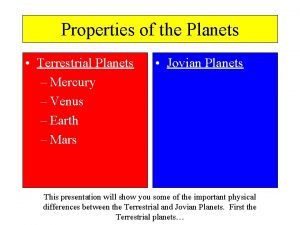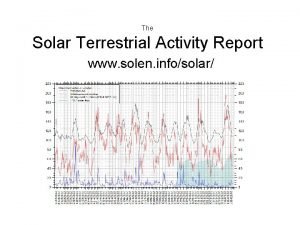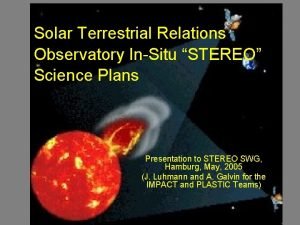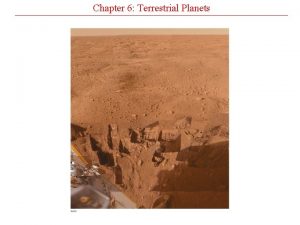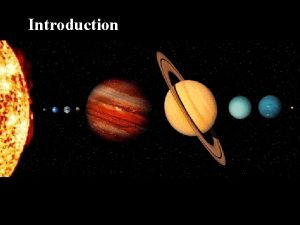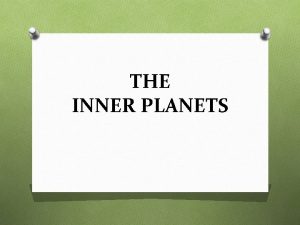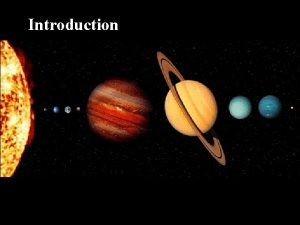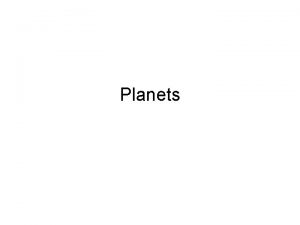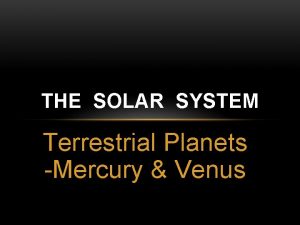Terrestrial Planets The 8 Planets of the Solar








- Slides: 8

Terrestrial Planets

The 8 Planets of the Solar System • Planets are categorized according to composition (what they are made of) and size. There are two main categories of planets: – Terrestrial planets (Mercury, Venus, Earth, Mars) – Gas giants or Jovian (Jupiter, Saturn, Uranus, and Neptune)

Characteristics of Terrestrial Planets • • • They are made up mostly of rock and metal. They are very heavy. They move slowly in space. They have no rings and few moons (if any). They have a diameter of less than 13, 000 km.

Mercury • Revolution period of 88 days. • Extreme temperature changes, ranging from 430 C (daytime) to -170 C (nighttime). • Even though it is the closest planet to the sun, Scientists believe there is ICE on Mercury! The ice is protected from the sun’s heat by crater shadows.

Venus • Venus is the brightest object in the sky after the sun and moon because its atmosphere reflects sunlight so well. • Its maximum surface temperature may reach 462 C • Venus has no moons • Revolution period of 225 days

Earth • Earth is the only planet known to support living organisms. • Earth’s surface is composed of 71% water. – Water is necessary for life on Earth. – The oceans help maintain Earth’s stable temperatures. • Earth has one moon and an oxygen rich atmosphere. • Revolution period of ______ days

Earth’s Moon • It takes the moon approximately 29 days to complete one rotation. (from new moon to new moon) • The same side of the moon always faces us. • The moon’s surface is covered in dust and rocky debris from meteor impacts. It has no water or atmosphere. • The moon reflects light from the sun onto the earth’s surface.

Mars • Like Earth, Mars has ice caps at its poles. • Mars has the largest volcano in our solar system: Olympus Mons is approximately 22 km high. • Mars appears red because of iron oxide, or rust, in its soil. • Mars has two moons and takes about two years to complete an orbit. This is a canyon! Valles Marineris is about 3000 km long, 600 km across, and 8 km deep

